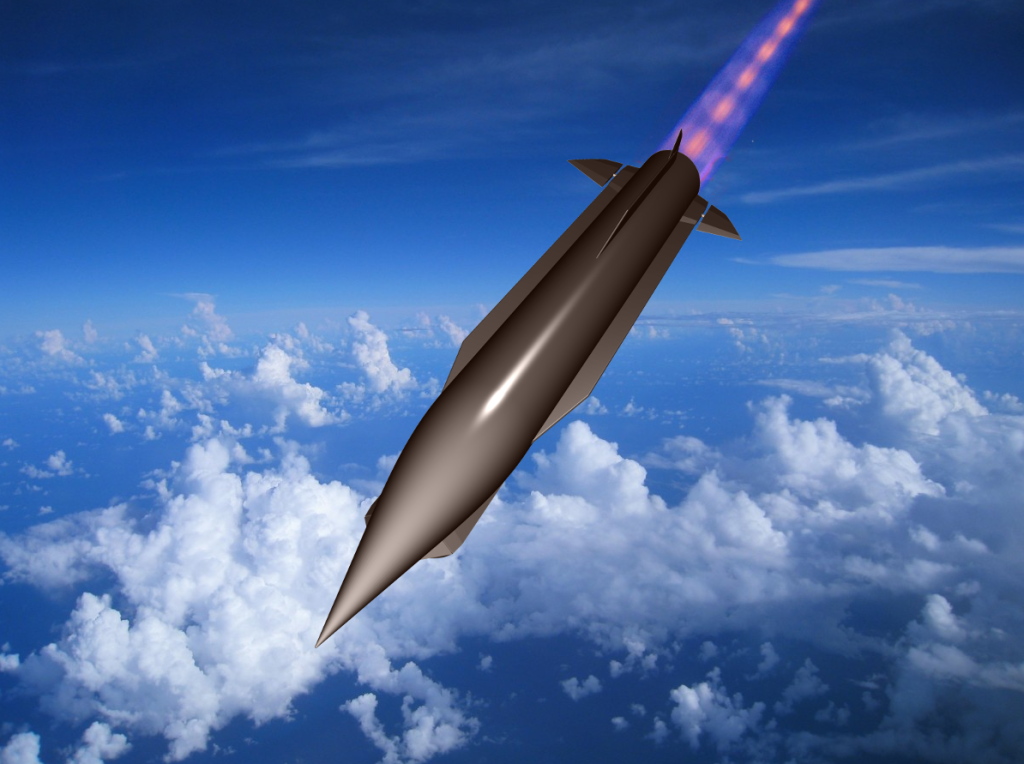The UK, Australian and US governments have agreed to accelerate hypersonic technology under the new AUKUS Hypersonic Flight Test and Experimentation (HyFliTE) Project Arrangement.
The trilateral partnership is pursuing a new level of collaboration to facilitate faster development, testing and evaluation of hypersonic vehicles and technologies. These could include long-range, strike missiles capable of being launched from land, sea, or air.
According to the UK Ministry of Defence, this work seeks to accelerate the partners’ battle-winning capabilities, bolster security and defend against evolving international threats. Existing research, including test flights of hypersonic defense vehicles, will be incorporated into the arrangement. This will reportedly allow AUKUS to develop at a pace that ‘no one nation could do alone.’
While it has not been confirmed whether additive manufacturing will play a role, the UK and US actively leverage 3D printing to bolster their defense capabilities. BAE Systems is 3D printing key components of the UK’s Tempest next-generation fighter jet. Elsewhere, the US Department of Defense has funded the development of 3D printed solid rocket motors and hypersonic ramjet engines.
“This landmark arrangement with our US and Australian partners demonstrates the commitment of AUKUS partners to staying at the forefront of battle-winning defence technology,” commented UK Defence Secretary, John Healey MP. “By combining our expertise and resources with those of our closest allies, we are accelerating the development of crucial hypersonic capabilities.”
Healey added that advancing hypersonic technology is vital to giving the UK the edge over adversaries on the battlefield while maintaining peace and stability in an “increasingly complex and dangerous world.”


AUKUS accelerates hypersonic technology
The UK expects HyFliTE to generate valuable procurement opportunities for UK suppliers, create high-skilled jobs and support economic growth. The arrangement will also unlock deeper collaboration across the three countries’ industrial bases, creating stronger supply chains by removing barriers in acquisition systems.
AUKUS has announced that it will conduct up to six flight test campaigns by 2028 under the new arrangement, which has a total funding pool of US$252 million. These are expected to provide robust experimentation to accelerate the development of hypersonic concepts and critical technologies.
The agreement will allow the UK, US and Australia to capitalize on their collective resources, testing facilities, and technical expertise. It follows the announcement earlier this year that the UK had launched its Hypersonic Technologies and Capability Development Framework (HTCDF).
Headed by the MOD’s Team Hypersonics (UK), this initiative features over 90 organizations, ranging from universities to global weapons manufacturers. The suppliers, which span the AUKUS nations and European allies, can bid for up to £1 billion worth of projects. These seek to accelerate the development of the UK’s first advanced hypersonic missiles, set to be built by 2030. The HTCDF was used to source industry support for the new AUKUS arrangement.
Nearly half of the HTCDF partners are small and Medium Enterprises (SMEs), most of which are UK-based. This enables the MOD to exploit UK talent, support local industries, and build a strong domestic supply chain. Several leading suppliers have experience using 3D printing for defense and aerospace applications, including BAE Systems, Raytheon, Lockheed Martin, and Skyrora. Therefore, additive manufacturing could be key in developing the UK’s new hypersonic technologies.


3D printing hypersonic weapons
The US has been particularly active in developing 3D printed hypersonic technologies. In May 2024, the DoD awarded aerospace firm Aerojet Rocketdyne a $22 million contract to produce a 3D printed hypersonic propulsion system prototype. The L3Harris Technologies subsidiary is using the funds to develop the prototype for the DoD’s Growing Additive Manufacturing Maturity for Airbreathing Hypersonics (GAMMA-H) challenge.
The GAMMA-H initiative has a $106.7 million budget and forms part of the Pentagon’s efforts to identify and develop new production methods for hypersonic weapons. It seeks to establish additive manufacturing processes that meet modern hypersonic airbreathing systems’ performance and environmental requirements.
Another company awarded a GAMMA-H contract is additive manufacturing service provider Sintavia. This agreement, signed in June 2024, will see the firm validate the quality and operational processes needed to design and 3D print hypersonic propulsion components.
Last year, the DoD collaborated with Lockheed Martin, metal 3D printer manufacturer Velo3D and aerospace part inspection company Vibrant to assess 3D printed hypersonic ramjet engines. The team manufactured and tested critical components to determine whether additive manufacturing can efficiently and reliably produce certified mission-ready propulsion systems.
Elsewhere, Lockheed Martin recently announced that it is 3D printing key components of its new Mako hypersonic missile. Metal additive manufactring is being used to produce the jet-fired missile’s guidance section and fins, unlocking substantial time and cost savings. According to Lockheed, the 3D printed guidance section is produced ten times faster and at 1/10th the cost of conventional manufacturing techniques.
A report from The Telegraph indicated that the new hypersonic missiles could be produced in the UK, marking a significant departure from the company’s usual US-centered approach. It has been suggested that the AUKUS alliance would enable this technology-sharing initiative.
All the news from Formnext 2024.
Who are the leaders in additive manufacturing? Vote now in the 2024 3D Printing Industry Awards!
What does the future of 3D printing hold?
What near-term 3D printing trends have been highlighted by industry experts?
Subscribe to the 3D Printing Industry newsletter to keep up with the latest 3D printing news.
You can also follow us on Twitter, like our Facebook page, and subscribe to the 3D Printing Industry Youtube channel to access more exclusive content.
Featured image shows a digital render of a hypersonic missile. Image via the UK Ministry of Defence.


